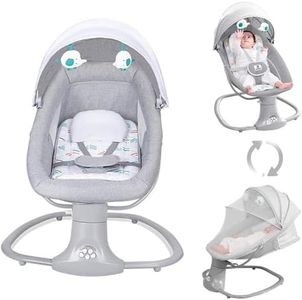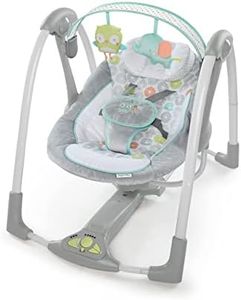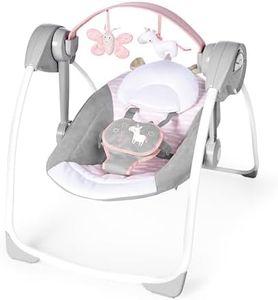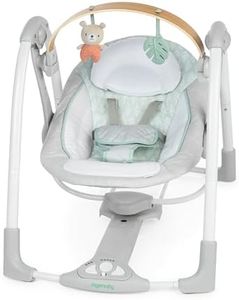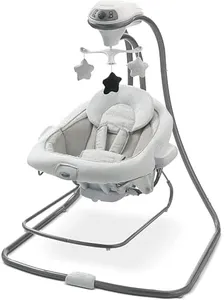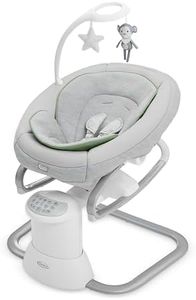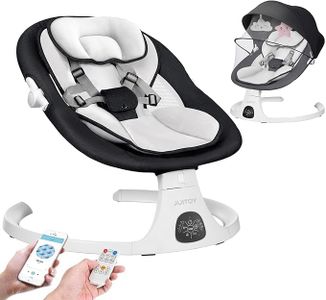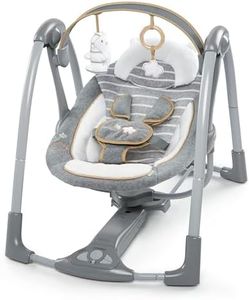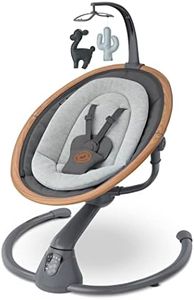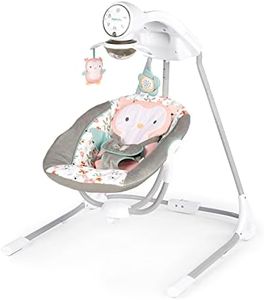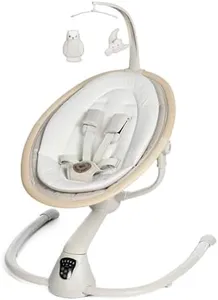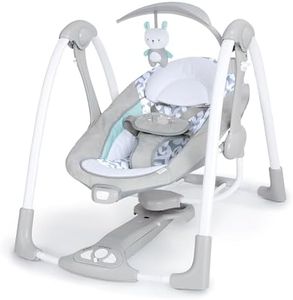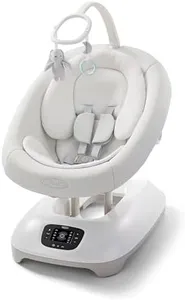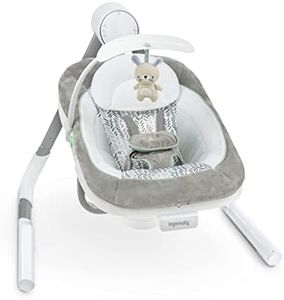We Use CookiesWe use cookies to enhance the security, performance,
functionality and for analytical and promotional activities. By continuing to browse this site you
are agreeing to our privacy policy
10 Best Baby Swing
From leading brands and best sellers available on the web.Buying Guide for the Best Baby Swing
Choosing a baby swing is about finding a safe, soothing, and practical solution to help comfort your baby while freeing up your hands. Since babies can have different preferences and needs, it's important to consider how long you'll use the swing, where you'll place it, and how easy it is to clean and operate. Always check for safety certifications and make sure the swing fits in your available space.Swing MotionsThe swing motion refers to the way the baby swing moves—either side-to-side, front-to-back, or multi-directional. This is important because some babies may be comforted by a particular movement direction, while others may not respond as positively. Side-to-side and front-to-back are the most common, and some swings offer both or additional motion patterns. If you're unsure what your baby will like, choosing a swing with multiple motion options provides extra flexibility.
Speed SettingsThe speed setting determines how fast or slow the swing moves. Different babies have varying comfort thresholds—some prefer gentle, slow rocking, while others like a brisker motion. Swings with multiple speed options allow you to find the pace your baby finds most soothing. More speed options are generally better for adapting the swing to your baby's changing moods and preferences over time.
Seat ReclineSeat recline refers to how far back the seat can be adjusted. This is important because newborns generally need a more reclined position for safety and comfort, while older babies may like to sit more upright to look around. Swings with multiple recline levels will be more adaptable as your baby grows and develops better head and neck control.
Harness TypeThe harness secures your baby in the swing. Most swings use either a 3-point or 5-point harness. A 5-point harness provides extra security by securing both shoulders, the waist, and between the legs—ideal for active or squirmy babies. For the safest choice, look for a swing with a secure and easy-to-use harness that fits snugly.
Weight LimitThe weight limit tells you the maximum weight the swing can handle safely. This is important for both safety and longevity of use. Swings with higher weight limits can be used for longer as your baby grows. Make sure to choose a swing that can accommodate your baby's current weight and will still be suitable as they gain weight over the next several months.
Portability and SizePortability and size determine how easy it is to move or store the swing. Some swings are compact and foldable, making them ideal for smaller spaces or travel, while others are larger and more stationary, often offering more features. Consider where you plan to use the swing most and whether you’ll need to move it around the house or take it with you.
Power SourceSwings may run on batteries, plug-in power, or offer both options. Battery-powered swings are portable and can be placed anywhere, but require regular battery changes. Plug-in swings save on battery costs and are ideal for frequent daily use in a fixed spot, but require an outlet nearby. Your home setup and how often you plan to use the swing should guide your choice.
Ease of CleaningBabies often make messes, so removable and machine-washable seat covers are especially helpful for keeping the swing clean. Swings with easy-to-remove covers or wipeable fabrics will make your life easier. If you anticipate frequent spills or diaper leaks, prioritize a swing that makes cleaning quick and simple.
Entertainment FeaturesMany swings include built-in toys, lights, or music options to entertain and soothe your baby. While not essential for everyone, extra features like mobiles, melodies, or vibrations can help keep your baby engaged and may make the swing more appealing. Consider your baby’s temperament and what kind of stimulation they enjoy when evaluating these bonuses.
